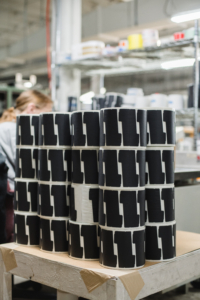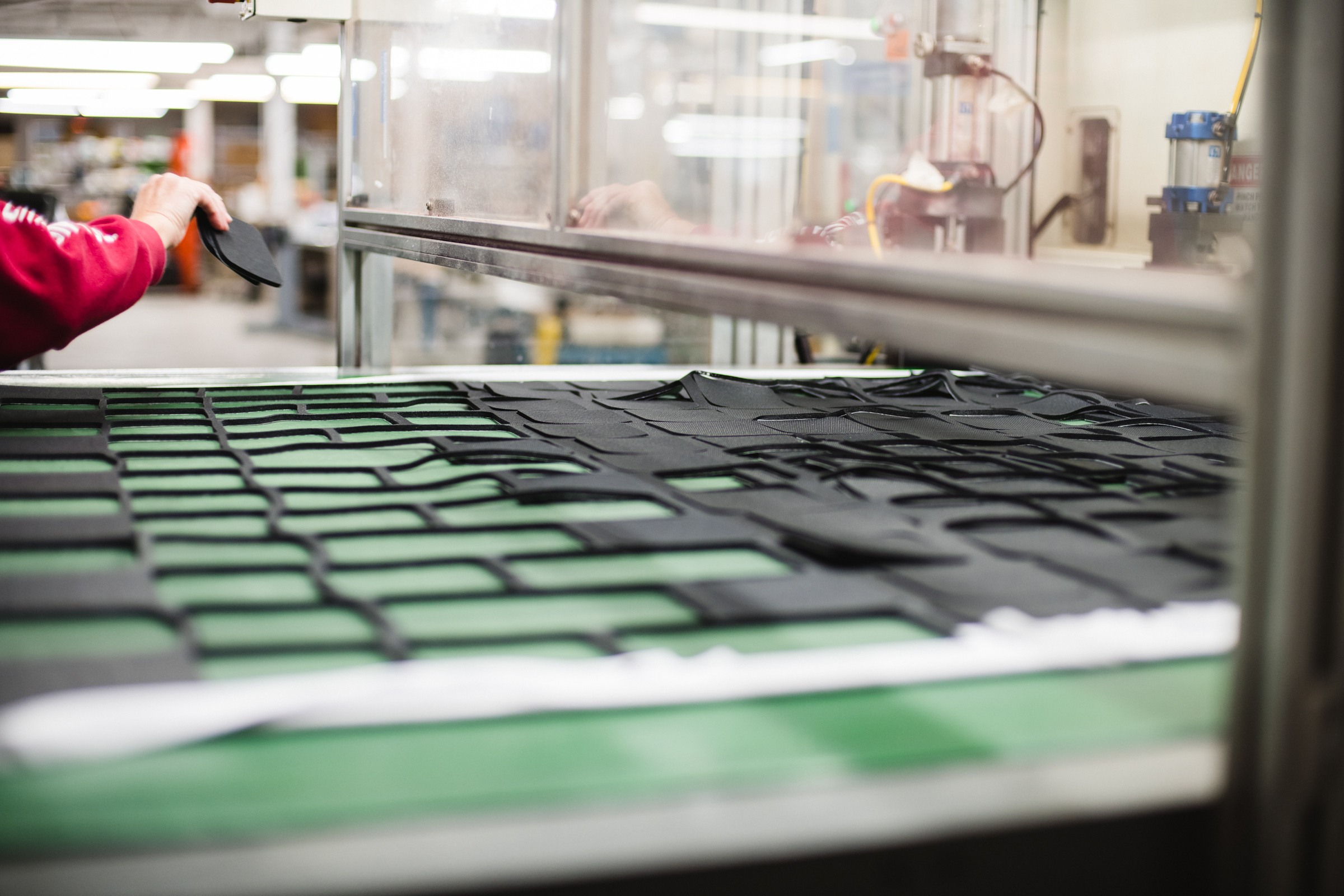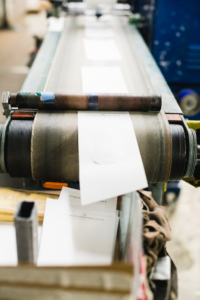High volume die cutting is the process of converting flexible roll and sheet stock into large quantities of components. While different converters may have varying definitions of “high volume,” at MCL, we consider high volume to be a production level over 50,000 parts/order. We produce much higher volumes, with some clients requiring around 2 million components per month. MCL is ISO 9001:2015 certified by NQA, and we have the knowledge, equipment, and expertise to provide precision high volume die cutting and material converting. Our facility includes 44,000 square feet of production space, and some of our machinery and capabilities include:
• A Sysco Servo Press
• Multiple rotary presses; 3 with flexographic printing capability, up to six colors
• Large format flatbed cutters sized 64×60, 28×54
• 50 employees.
• An engineering team responsible for process development and optimization
• An ability to customize our processes by utilizing modular stations with a variety of feeding methods and finished part collection to process a wide range of raw materials and laminations
Hits or Revolutions Per Minute – How We Measure Speed and Volume in Die Cutting
Die cutting engineers often refer to the number of times a component or linear row of components can be cut in a specific period of time, such as hits, revolutions, or feet per minute. Each is an accurate way to measure productivity, since the size of the part is a factor in how many can be produced daily. A larger component may be produced with each hit, while multiple small components may be produced with the same hit. This volume difference is a function of the area size of the die. A flatbed press “hits” each time the flatbed die strikes and cuts material. A rotary press measures each die revolution, which usually processes multiple parts per revolution. It is important to understand the associated hits per minute of a given type of machinery, since higher speed processes often require higher cost tooling. Some raw materials and finished products by nature require slower production speeds. In those situations, the equipment selected likely will have lower set up costs. MCL’s objective is to match our customers’ volume demand with the high volume process that meets their requirements.
What Volumes Can You Achieve With Different Die Cutting Machinery?
Clicker – A clicker is a manually operated hand fed die cutting press, which has the lowest cost setup, can achieve around 1-2 hits per minute, and is ideal for orders in the neighborhood of 5,000 parts.
Flatbed Press – The next step up in capacity are presses with either roll fed or long strip fed features, providing up to 10,000 hits per day with belt delivery of finished parts and/or automatic settings. A flatbed press is ideal for projects under 50,000 parts per order but may be utilized for higher volumes of large scale parts. It also provides the most flexibility in part size.
Rotary Die Cutting – A rotary die cutting process can provide up to 80 revolutions/minute, which is ideal for projects over 50,000 parts per month provided that the material is available in rolls and not subject to curl or roll set. Parts may be laminated, slit, and/or printed in line and adhere to size limitations – roughly 8” x 12” or less.
Servo Press – Our Sysco Servo press allows us to produce highly precise, complex components that may involve lamination, punching, ultrasonic welding, and many more processes. It can perform these in line (single pass) and die cut with speeds up to 150 revolutions/minute, making it an ideal – and sometimes the only viable option – for manufacturing high volume complex components.
Class A Die Cutting/Progressive Die Cutting – Class A Die Cutting, which uses a male and female die to cut flexible materials, can achieve some of the highest speeds when compared to the above processes. This process is used when a combination of speed and ultra-precision are required. Class A die cutting can achieve up to 160 hits per minute.
How Do Materials Affect Die Cut Production Speed?
As one might guess, raw materials’ physical characteristics have a direct effect on production speeds, as do the number of parts produced in each cycle. Some materials actually lend themselves to high speed production while others inhibit it. In addition, smaller parts lead to higher production levels, since multiple parts can be cut in a single hit than with a larger part. Some of the materials we regularly use in high volume die cutting include:
• PEEK Films
• PVC, Polyester, and Urethane Foams
• Mylar
• Kapton
• Pressure Sensitive Adhesives
• Label and Tag Materials
Products Commonly Manufactured with High Volume Die Cutting
• Credit card blanks

• Clean removable labels with a dead zone adhesive tab
• Placards for warnings
• Disposables, like filter strips/protective covers
• Antimicrobial films for buttons, doorknobs
• Face Shields
Operations that can be performed in line with high volume die cutting
Our expansive and advanced equipment capabilities allow us to choose the right machine to fit your needs. Our equipment capabilities culminate in our Sysco Servo Press, which allows for exceptional tension control, precise die-to-die registration, registration to print, and registration between lamination layers. In addition, the servo press can perform multiple conversion processes in a single step, these processes may include:
• Lamination
• Punching
• Slitting
• Ultrasonic Welding
• Corrugation
• Embossing
• Heat Sealing
• Dispensing Pattern Adhesive
An OEM’s Problem, and How We Solved It
A bit manufacturer needed a solution for the foam packaging that would keep the part in place without interfering with the parts display. Their previous vendor did not have a cost-effective method of production. A second vendor failed to address the problems. Finally, the bit manufacturer approached MCL with their problem, and we had the solution. Our servo press maintains wind and unwind tension control, so we were able to butt-cut and then island place the components precisely on the stock that will feed into their own machines for the next step in package manufacturing. The customer was ecstatic that we were able to save them on material cost, and also save them time since the irregular placement was causing production shutdowns.
Why Choose MCL for Production Die Cutting & Lamination
Our extensive machinery inventory allows us to choose the right material converting process to fit your specifications and budget. Our ability to engineer solutions for your most complex converting needs provides our customers with a partner that will reliably maintain the precision and quality they expect. Lastly, our experience has given us a deep knowledge of material and adhesive options which our customers rely on to ensure they are bringing the best product to market at the best price.




